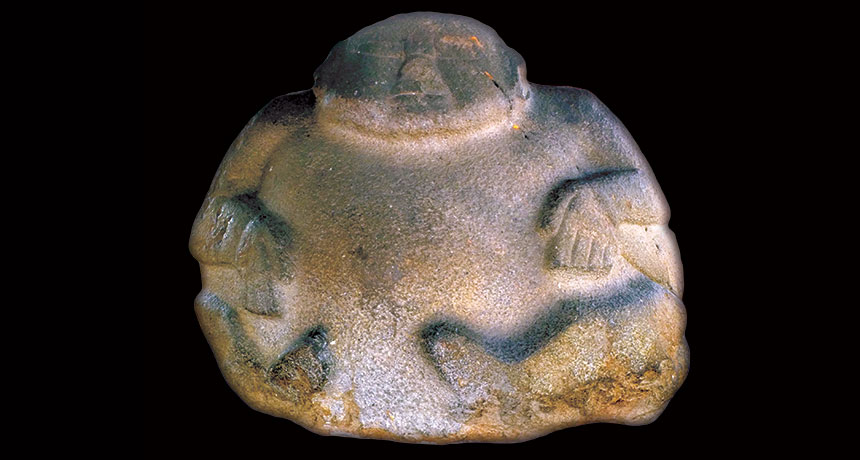Mesoamerican Sculptures Reveal Early Knowledge of Magnetism
Stone figures with magnetized cheeks and navels suggest the pre-Maya civilization of Monte Alto understood the attractive force

Researchers hypothesize that magnetic figures may have been crafted to memorialize the dead, with the attractive forces of the sculptures representing a lingering life force. (Roger Fu)
By Joshua Rapp Learn
smithsonian.com
August 6, 2019
Magnets are a mystery that has baffled scientists and philosophers for millennia, and researchers still don’t fully understand the properties that give magnetic fields their potency. Ancient Greek legend held that a shepherd named Magnes first discovered the curious force when a stone pulled at his iron staff in an area of Greece then known as Magnesia.
Whether or not Magnes the shepherd actually existed, he wasn’t the only ancient human to notice the funny characteristics of certain types of stone. The first culture to become aware of magnetic material is a matter of open debate, but new evidence suggests ancient cultures in the Americas had knowledge of magnetic forces long before the first pocket compasses.
The ancient Monte Alto people of Mesoamerica, for example, used stone that had been magnetized when struck by lightning to build giant heads and potbellied sculptures centuries before the rise of the great Maya civilizations. A new study published in the Journal of Archaeological Science suggests this civilization, which flourished in present-day Guatemala around 500 B.C. to 100 B.C., must have had some way to detect the relative strength of the magnetized stones.
“It’s a fascinating subject for me. It’s one of these things that we would never think about, but we need to start asking these questions,” says Oswaldo Chinchilla, an associate professor of anthropology at Yale University and coauthor of study. He and colleagues note that the Greek philosopher Thales of Miletus described the attraction of a magnetic lodestone to fragments of iron in the sixth century B.C., but while Thales speculated about the nature of magnetic force, a number of other cultures had likely taken note of magnetism as well. “It’s something that people had noticed and sometimes measured from very ancient times.”
Read more:
https://www.smithsonianmag.com/science-nature/mesoamerican-sculptures-reveal-early-knowledge-magnetism-180972820/#RyjFEKQPoB8SYLq6.99
